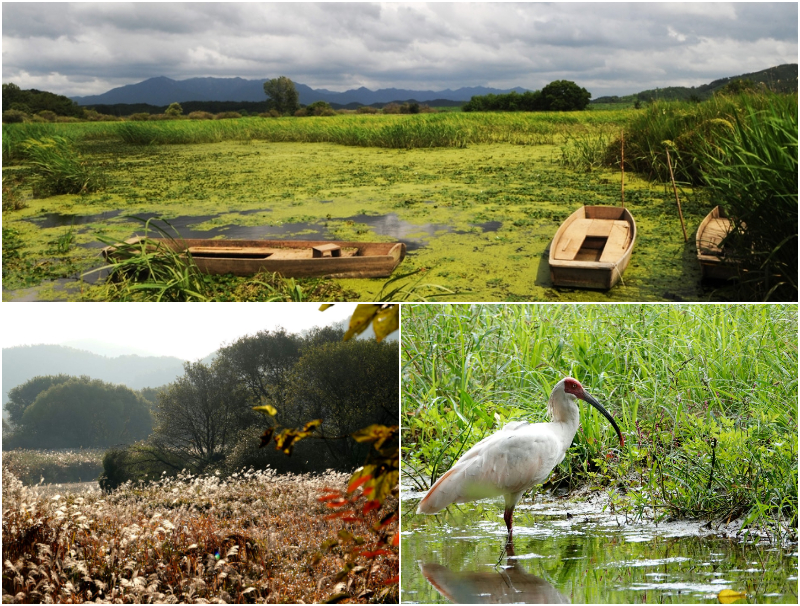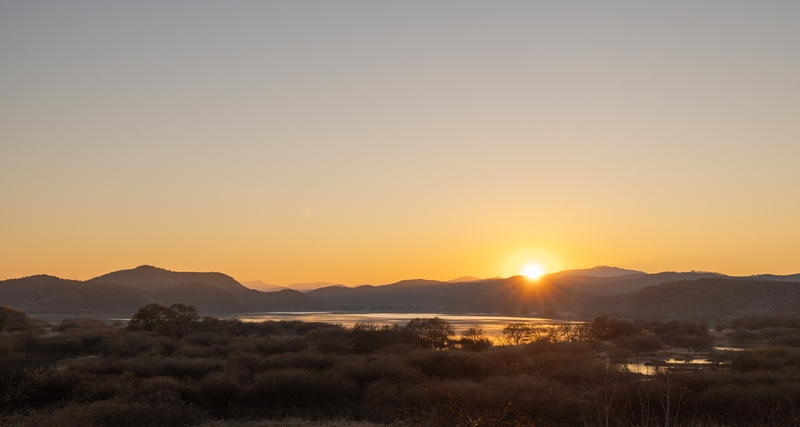By Lee Kyoung Mi
Video = Lee Jun Young
A place teems with light-green willow sprouts and colorful wildflowers in spring, while wild aquatic plants surface above water and shine like blue jewels in summer.
In fall, waves of silver grass form a beautiful spectacle and in winter, migratory birds fly in from faraway in northern Siberia. Upo Wetland thus shows the unique aspects of nature in each of the four seasons.
Located in Changnyeong-gun County, Gyeongsangnam-do Province, Upo was formed after sediment that floated from the Nakdonggang River blocked the waterway. Covering 2.5 million square m, or equivalent to the area of about 350 soccer fields combined, the area is the nation's largest natural inland wetland.
Formerly one swamp, the marsh was divided into the Upo, Mokpo, Sajipo and Jjokjibeol wetlands after embankments were built during Japanese colonial rule of the Korean Peninsula in the early 20th century and Saemaul Undong (New Community Movement) in the 1970s. These four wetlands combined now comprise Upo Wetland.

Clockwise from the top is Upo Wetland filled with aquatic plants in summer; an ibis searching for food; and silver grass on the wetland in fall. (Changnyeong-gun County Office)
The wetland is called "a living natural museum" for its preservation of nature as it was when the peninsula was formed about 140 million years ago. It was inscribed on the Ramsar List of Wetlands of International Importance in 1998 and named the world's first Ramsar Wetland City in 2018.
"I saw a leopard cat and an eagle owl a few days ago," said Yoon Ok Hee, a nature and culture guide at the wetland's museum. "Upo Wetland is where aquatic plants and land creatures coexist and forms an ecosystem in which numerous life forms are born and decompose, including rare wildlife."
"Many spoonbills, a globally endangered bird species, are in the wetland so please visit," she added. "Upo Wetland is always waiting for you."

Sunset at Upo Wetland (Kim Sunjoo)
Upo has well-established surrounding trails, the shortest of which takes about 30 minutes (1 km) and the longest around 3 1/2 hours (9.7 km). Visitors can choose from several courses to leisurely walk around and explore Upo Wetland.
Guide Yoon recommended Trail of Life, which is about 8.4 km long and takes 2 1/2 to three hours. This path is not so rough or difficult to walk, so visitors can comfortably but comprehensively enjoy the wetland.
Admission is free but for safety reasons, all walks must end before sunset and none are allowed after dark.
km137426@korea.kr
![[Exploring Local 100 ②] Daegu street honors nation's Catholic, liberation roots](/upload/content/image/363633b615624b75a32f476f910310ec_20231207135120.jpg)
![[Exploring Local 100 ①] Transit mountain pass Mungyeongsaejae](/upload/content/image/b3e8517104684c2080738883bf91850d_20231129082404.jpg)